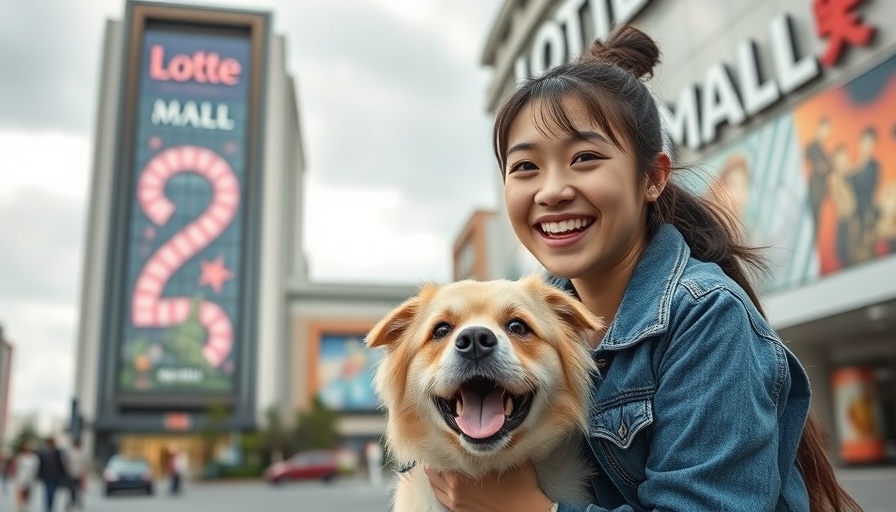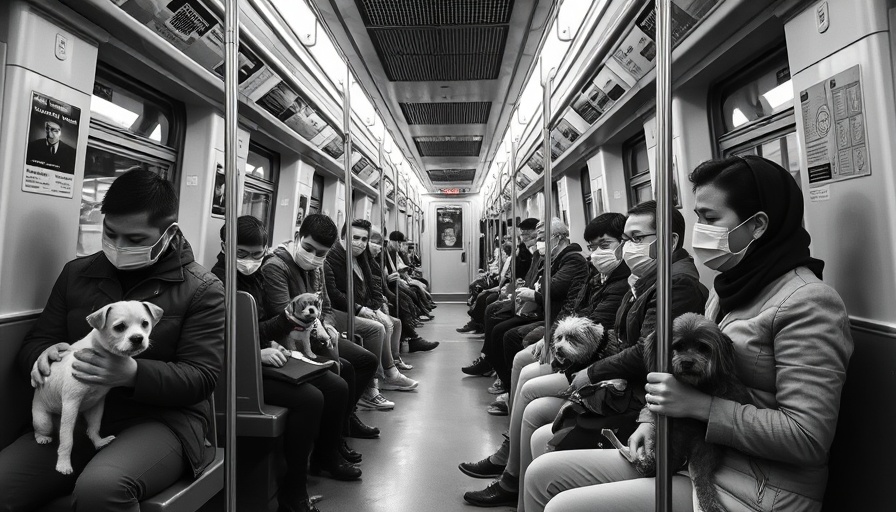
Understanding the Pet Policy Chaos: What Every Pet Owner Needs to Know
Across South Korea, a cultural shift is occurring as more than 15 million pet owners increasingly take their beloved companions along on shopping trips. Retailers, eager to capitalize on the growing pet ownership trends, are reinventing their spaces to welcome furry friends. However, this welcoming attitude clashed with confusion as inconsistent pet policies lead to much frustration among shoppers.
The Retail Landscape: Diverging Policies
While pets are becoming common sights in establishment such as malls and supermarkets, the rules governing their admission vary wildly from one retailer to another. For example, Starfield Market's innovative pet policy allows dogs and cats weighing less than 5 kilograms if they are kept in strollers. Such welcoming measures contrast sharply with tighter regulations found at many other chains like Emart, where pets aside from guide dogs are strictly barred. These shifting rules reflect a broader trend of retailers grappling with consumer demands while facing regulatory gray areas.
Legal Considerations: The Role of Regulations
The laws governing pet access in retail spaces in Korea guarantee entry for guide dogs, yet leave other animals to the discretion of individual businesses. This legal landscape added to the ambiguity, causing pet owners to face stands at the entrance of stores, left bewildered by contradictory staff instructions. As a Ministry of Agriculture, Food and Rural Affairs official pointed out, the enforcement of rules regarding pet entry is not mandated, leading to varying compliance of businesses. This policy void can create scenarios where even employees are unaware of the regulations in their own stores, as experienced by many pet owners across the nation.
Customer Experiences: Frustration and Confusion
For pet owners navigating these divergent rules, shopping has become less of a pleasure and more of a hurdle. One shopper shared a distressing experience of being barred from a supermarket, only to discover later that pets were indeed allowed. This inconsistency frustrates thoughtful consumers who are eager to include their pets in their outings. The need for transparency and clarity is evident, especially as more people wish to include their four-legged friends in their daily activities.
Future Directions: A Pet-Friendly Shift?
As consumer demand for more pet-friendly environments continues to rise, the hope is that retailers will standardize their pet policies. This could lead to a harmonious shopping experience for all, as businesses adapt to create spaces for both animals and shoppers alike. With changing societal norms surrounding pets, there is a clear opportunity for businesses to cater to their patrons by ensuring inclusive policies.
The Path Forward: What Can Pet Owners Do?
As a pet owner, advocating for change in local policies can be key. Reaching out to retailers, participating in surveys, and sharing experiences on social media can greatly influence the adoption of more pet-friendly policies. Businesses appreciate feedback from their customers, and your voice can help encourage a more welcoming shopping environment for everyone.
Legal Implications: The Need for Change
The onus of responsibility lies not only with individual retailers but also with local governments to address and clarify the regulations regarding pets in retail spaces. A more definitive framework from governmental bodies could mitigate confusion and empower retailers to implement more straightforward policies.
The growing pet ownership trend demands that retailers adapt. As users of shared spaces, pets are proving to be not just companions but a major aspect of modern consumer culture. With a collective voice from the pet owner community pushing for clearer policies, it is likely we’ll see the development of a more unified retail experience.
 Add Row
Add Row  Add
Add 




Write A Comment